The Nippon Foundation’s Traditional Medicine Projects
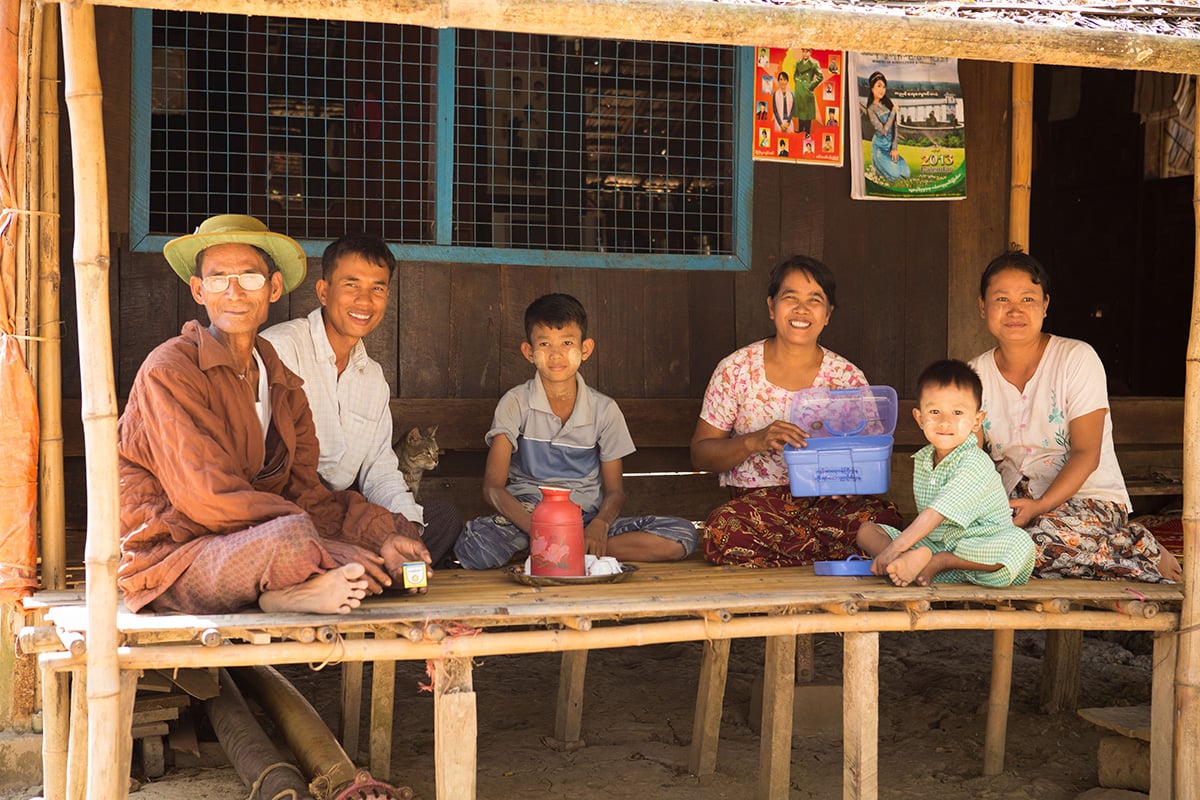
1. “Traditional Medicine Box” project in Mongolia (established 2004; $5.4 million)
On October 29, 2010, the head of the Mongolian Ministry of Health signed a memorandum of understanding outlining an action plan for the ministry to take over from The Nippon Foundation the administration of a project involving traditional medicine boxes, starting from the tentative date of January 1, 2012. This stems from an agreement reached in November 2010 between the chairman of The Nippon Foundation, Yohei Sasakawa, and the president of Mongolia, Tsakhiagiin Elbegdori, calling for the Mongolian government to take over the project.
1. Three types of support
- Provision of traditional medicine kits
- Training doctors in traditional medicine
- Mobile treatment by traditional medicine practitioners
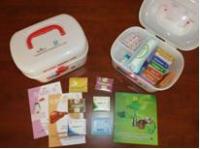
2. Area of implementation
- 8 provinces; 35 districts
- 20,000 households (approx 100,000 persons)
3. Distribution of medicine boxes
- “Hotel mini-bar” payment system
- Each box (including medicine) costs approximately $10
4. Content of medicine boxes
- 12 varieties of traditional Mongolian medicine
- 9 varieties of basic medicines (including medicine to treat stomach pain, diarrhea, fever, etc.)
- 3 region-specific medicines (including medicine to provide temporary pain relief from kidney, heart, liver, and joint problems, etc.)
- A thermometer, bandages, absorbent cotton, sticking plasters, and sterilizing alcohol.
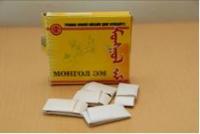
5. Method of use
- Medicine boxes are placed in family homes
- Family members can use the medicines at home whenever necessary
- Payment for the medicines used is made when the doctor from a local hospital makes a regular visit (average payment rate of 93% for 2006–08)
- Reduces requests for doctor’s visits to nomadic households (reduced by 45.2% in one district)
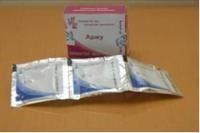
6. Traditional medicine training for doctors
- Mainly targets doctors with a background in Western medicine
- Approx. 10,000 doctors trained for FY2004–08
- Training lasts 6 days (8 hours per day)
- Content includes basic knowledge in traditional medicine and the use of medicine kits
7. Mobile clinic providing traditional medicine services
- Involves 5 practitioners of traditional medicine
- Provided at district hospitals with in areas supplied with medicine kits
- Services provided once a year during summer
- Approx. number of patients treated: 2,000 (FY2004), 4,000 (FY2005), 2,000 (FY2006), 2,000 (FY2007), 1,250 (FY2008)
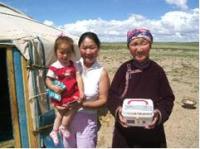
2. Traditional Medicine Box project in Myanmar (established Feb. 2009; $580,000)
Drawing on the example of the traditional medicine kit system introduced at an international conference in Mongolia in 2007, the Myanmar Ministry of Health created a similar system for domestic use, beginning on a trial basis in 2008. After thus confirming the usefulness of the kits, the Myanmar government, together with The Nippon Foundation, began the distribution of over 7,000 medicine kits to 500 villages in each of the country’s 14 states (for an average of 1 kit per village) during the three-year period from 2009 to 2012.
1. Price
- $10 per medicine box
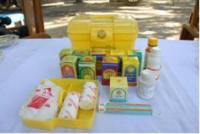
2. Content
- 7 varieties of traditional Myanmarese medicine (including cough medicine, 2 types of anti-fever medicine, cardiac medications, eye drops, anti-diarrhea medicine, and painkillers)
- A thermometer, cotton gauze, bandages, sterilizing alcohol, medicinal plant alcohol, and adhesive bandages
- A booklet on traditional Myanmarese medicine
3. Distribution
- 1 medicine box per village (not household)
- Medicine boxes distributed to a total of 7,000 villages in 14 states (around 500 villages per state) during a three-year period (2009–11); distribution began in hurricane-struck Yangon state in 2009.
2009; 4 states: Yangon (Feb.), Sagaing (Jun.), Ayeyarwaddy (Sep.), Bago (Oct.)
2010; 5 states: Mandalay (Jun.), Mon (Jul.), Magway (Sep.), Shan (Oct.), Kachin (Oct.)
2011; 5 states: Rakhine, Kayin, Tanintharyi Division, Chin, Kayah
Currently, based on a request from the Myanmar Ministry of Health, the project is being expanded within each province to increase the number of medicine boxes to the level distributed to 1,500 villages per state, and cover 28,000 villages by the end of FY2014 (out of Myanmar’s total of around 65,000 villages). Plans also call for the medicine boxes to be medicine boxes to be distributed to all the villages in Karen State in FY2012.
4. Nippon Foundation assistance
- Covering the cost of the medicine kits, guidebooks, and training on traditional medicine
- Establishing the Myanmar Herbal Pharmacopoeia covering 20 types of traditional medicine (including all 7 types included in the medicine box) developed by a committee chaired by Myanmar’s minister of health
- Dispatching Japanese specialists from Toyama University in Japan to assist the creation of the pharmacopoeia
- Supported the construction of 200 schools in Shan State, and will construct a further 100 schools there and in Rhakine State as well; the students in those areas and members of the local communities will be the primary recipients of the medicine boxes
3. Traditional medicine box project in Thailand (established Jan. 2009; $860,000)
Medical costs are increasing in Thailand as a result the country’s policy of providing free medical healthcare. In order to cut costs, the Thai Ministry of Public Health is now adopting the traditional medicine kit system. Together with Mahidol University, the efficacy of the medicine box system is being examined, with the aim of building a medical service model that incorporates traditional medicine.
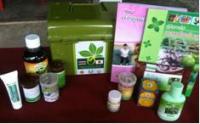
1. Target regions (two phases):
- Phase 1 (Jan. 2009 to Oct. 2010): 1,390 households received a medicine box, for an average of approximately 100 families in each of 12 cities, towns, suburbs, and farming villages in north, central, northeast, and south Thailand (450 households in Chiang Rai, 316 in Suphanburi, 323 in Srisaket, and 310 in Suratthani 310)
- Phase 2 (starting in Oct. 2010): 10,070 households received a medicine box (2,000 in Chiang Rai, 2,000 in Suphanburi, 5,300 in Srisaket, 770 in Suratthani)
- 10 other provinces in Thailand are planning to launch the project
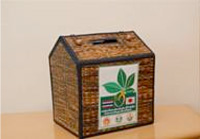
2. Cost
- 1,000 baht (approx. $32) per box (including medicine)
3. Content
- Medicine box includes 20 varieties of traditional Thai medicine produced in two national hospitals under the jurisdiction of the Thai Ministry of Public Health
- Includes cold, fever, and diarrhea medicine, topical creams to treat muscle pain and insect bites, as well as alcohol, cotton gauze, and a guidebook

4. Method of use
- Registered “health volunteers” in Thailand (totaling approx. 800,000 people) collect payments for the medicine used and replenish the medicine boxes when necessary
- Data analyzed by members of an expert committee composed of professors from Mahidol University, who then present the results of three years (2010–12) of the project domestic and international conferences
5. Project grants and costs
- FY2008: $346,800 in grants and $650,400 in total project costs
- FY2009: $229,400 in grants and $533,000 in total project costs
- FY2010: $285,000 in grants and $1,282,000 in total project costs
*35% of the grants covered by The Nippon Foundation; $1,604,200 in support from Thailand’s Ministry of Public Health
4. ASEAN International Conference on Traditional Medicine (established 2009)
In the field of traditional medicine, The Nippon Foundation is holding annual international conferences over a period of five years as a way of sharing information and promoting exchange between ASEAN member states. The conference venue will change every year, as will the national health ministry that oversees the event. The first conference was hosted in Bangkok by Thailand’s Ministry of Public Health, on August 31, 2009; the 2010 conference was held from October 31 to November 2 in Hanoi, Vietnam; the third Conference, hosted by the Indonesian Ministry of Health, was held from October 31 to November 2, 2011, in the Indonesian city Solo, Indonesia; and the fourth Conference is scheduled to be held in Malaysia from October 26 to 28, 2012.

- The ASEAN International Conference on Traditional Medicine is hosted by a different country for each of the five years it is held. By conducting the conferences in this manner, The Nippon Foundation aims to help share of information, cultivate experience, and convey expert knowledge in traditional medicine relevant to primary health care providers in ASEAN member states. The focus of the conference is the creation of a framework and implementation of a plan to conduct research and development regarding traditional medicine through cooperation between ASEAN member states. At the conference, information is shared on topics that include the rules and specifications for cultivation of widely used medicinal plants on the basis of Good Agricultural Practices (GAP); basic research on natural remedies and clinical research; the preparation of ingredients for natural remedies; and the use of medicinal plants to create a national pharmacopeia. Discussion is also held between ASEAN member states on the topics that include the following: a) the traditional medicine box system currently implemented with the support of The Nippon Foundation in Mongolia, Thailand, and Myanmar, and Vietnam; (b) the integration of traditional healthcare within the current healthcare system; c) the role of NGOs in promoting traditional healthcare; d) and the acquisition of knowledge regarding traditional medicine, and other topics. (The Nippon Foundation provides approx. $190,000–$200,000 to cover the cost of each conference.)
5. National School of Traditional Medicine in Cambodia (established April 20, 2009)
As a means of consolidating the system of traditional medicine in Cambodia, the country’s Ministry of Health opened the first ever national School of Traditional Medicine. The three-storey school, constructed by the Cambodian government, opened on April 20, 2009. Classes began the same year, on May 18. Laws and systems concerning traditional medicine in Cambodia have yet to be introduced, and an accurate figure of the number of people engaged in traditional medicine in the country is not known. The establishment of this new school is a way for such fundamental aspects of traditional medicine to now be addressed.

1. Students
- Kru Khmer (traditional medicine practitioners) with 10 or more years of experience
2. Content
- Lectures on pharmacology, anatomy, and other subjects and classes on massage, acupuncture, and other subjects
- First certified classes to be conducted over a half-year period (450 hrs in total)
- Totally 250 Kru Khmers received certifications in 3 years
- An NGO, Cambodia Traditional Medicine Organization, was launched in June 2010 and took over the running of the entire school
- Also, in FY 2010, two courses were opened: (1) a 10-month course for intermediate (50 students), and (2) a 6-month course for experts (50 students)
3. Nippon Foundation assistance
- Supports the costs for dispatching Japanese experts to create the curriculum for the new school, sending Cambodian experts overseas, and providing local instructors and support for students. (total assistance approx. $450,000)
6. Traditional Medicine Box Project in Vietnam (established 2011 July; $300,000)
Drawing on technical support from the WHO, Vietnam’s Ministry of Health decided to implement a project for providing traditional medicine boxes in three of the country’s provinces. The project will provide scientific evidence for organizing, managing, and developing traditional medicine, provided in the form of a box for people in remote areas. Investigation and planning has been conducted with the cooperation of Vietnam’s Ministry of Health and the WHO with regard to introducing the traditional medicine box system in mountainous and less affluent regions of Vietnam. Consideration will also be given to dispatching experts by the WHO’s Western Pacific Regional Office in order to collect and analyze statistical data to expand the influence of traditional medicine and medicine box system. Based on this investigation and project plan, Vietnam’s Ministry of Health will begin implementing the project in August 2012.
Project Locations in Vietnam
| Province | 1st year | 2nd year | |||
|---|---|---|---|---|---|
| Intervention commune | Control commune | Intervention commune | Control commune | ||
| Hoa Binh | Trung Hoa Tan Lac District | Lo Son Tan Lac District |
Phu Cuong, Tan Lac District | Trung Hoa, Lo Son; Phu Cuong | Quy My and Lung Van commune, Tan Lac District |
| Gia Lai | Ialy Chu Pah District |
IaNhin ChuPah District | Hoa Phu ChuPah District |
Iakhuoi, IaNnin; Hoa Phu | Iaka and IaKhuoi ChuPah District |
| Dong Nai | Ma Da, Vinh Cuu District | Phu Ly, Vinh Cuu District | Tan Tri, Vinh Cuu District | Ma Da, Phu Ly ; Tri An |
Huu Liem, Tan An, Vinh Cuu District |
| Subtotal | 3 | 3 | 3 | 9 | 6 |
| Subtotal | 6 | 3 | |||
| Total | 9 | 15 | |||
7. Traditional Medicine Promotion Project in Laos (under consideration)
Since 2000, emergency medical kits containing 14 to 33 varieties of modern (Western) medicine have been sent to 5,648 villages in Laos, with the support of UNICEF, the World Bank, the Asia Development Bank, and JICA. The Nippon Foundation is now discussing the provision of support to the following pilot project to supplement these kits with traditional medicine boxes.
1. Target regions
- 6 provinces, including Oudomxay province (north), Vientiane province (Central), and Champasak province (South).
- 40 villages that have already received medicine kits through UNICEF will also be selected, for a total of 720 villages to receive the traditional medicine boxes; villages must have at least 50 households to be selected (there is an average of 5 persons per household)
2. Cost
- $14 per traditional medicine box
3. Content
- The medicine boxes are currently handled by the Laos Health Ministry’s Food and Drug Department (FDD). The Traditional Medicine Research Center (TMRC), which is under the jurisdiction of the ministry, will select nine varieties of basic medicine to be included in the kits, including medicine to treat colds, fevers, and diarrhea.
4. Method
- An expert committee will be formed, consisting of members of the FDD and TMRC. A provincial meeting, to be attended by representatives selected from each of the provincial health centers, prefectural health centers, and provincial traditional medicine centers, will then be put in motion. Training in traditional medicine will be provided for the representative selected from each village, who will be responsible for replenishing the medicine and collecting the payments.
*** Support for the World Health Organization (WHO) ($1.36 million)
Since 2003, The Nippon Foundation has provided support to the World Health Organization in various forms, including grants for surveys of policies and regulations regarding traditional medicine in WHO member states and support for the creation of monographs on selected medicinal plants in 15 Central Asian countries. The foundation has also co-hosted international conferences with the WHO.
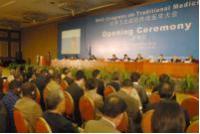
1. Survey of traditional healthcare in WHO member states (first survey: 2003–05; second survey: 2008 to present)
2. Creation of WHO monographs on selected medicinal plants in Central Asia and Black Sea coastal regions (2005–07).
This support included the selection of important medicinal plants in Central Asia, drafting of text for WHO monographs, the translation of existing monographs, and the creation of monographs describing the medicinal plants of Central Asia and nations bordering the Black Sea.
3. International conference on traditional medicine (Aug. 2007). An international conference on traditional medicine in Ulan Bator, Mongolia, was co-hosted by WHO and The Nippon Foundation in August 2007.
4. Support for WHO International Conference on Traditional Medicine (Nov. 2008). The Nippon Foundation provided
assistance to cover the travel expenses of participants in a WHO international conference on traditional medicine held in Beijing, which resulted in the adoption of the “Beijing Declaration.” This included support provided to up to two persons from seven of the ASEAN 10 countries—Indonesia, Philippines, Vietnam, Thailand, Myanmar, Cambodia and Laos. (Grant amount: $20,000)



